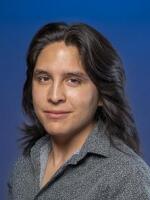Las Vegas is a bustling city and air pollution is nothing new.
For years, those who watch pollution for Clark County have said wildfires in California have caused a lot of our air problems.
That said, Las Vegas and Henderson are the 11th most ozone-polluted cities in the United States. But the ones who suffer most are those who live in more urban, lower-income areas like east Las Vegas.
Data from 2019 shows that 10% of adults from east Las Vegas, where 65% of the residents are Hispanic, suffer from lung problems compared to 5.6% of adults in Summerlin.
To combat the problem, the EPA just awarded Las Vegas $300,000. They’ll work with several groups, including ImpactNV, a sustainability group, and the Desert Research Institute.
The project is called Buen Aire Para Todos. DRI’s role in the project is the science, working on a neighborhood-level scale monitoring system.
“Because we were so focused on those neighborhoods that were suffering some of the worst air quality, we're going to be using a set of off-the-shelf technology called Purple Air Sensors to get the community involved in both looking at air quality impacts and then monitoring themselves,” said DRI’s Dr. Derek Kauneckis.
East Las Vegas has less vegetation and green space, which makes it more susceptible to heat impacts. There’s also ozone – made primarily of smog and wildfire smoke.
“Because they’re very small particles, it exacerbates respiratory stress. So it makes it harder for people to absorb oxygen when they're breathing it also, it has an impact on cardiovascular health, as well,” according to the DRI scientist.
More ozone is possible on hotter days, he said, because heat exacerbates atmospheric chemistry.
A difficult question at the center of climate equality in cities like Las Vegas is: do you sacrifice water for greenery? Or sacrifice greenery for water? But there are drought-tolerant trees, for example, or other solutions Kauneckis said will be debated in public forums.
All of Las Vegas is at the bottom of the valley, but the east side of town feels the heat inversion effect more, mostly due to less green space, carbon emissions and indoor air quality – dated HVAC systems, filter quality and other infrastructure issues.
The EPA grant will fund 10 outdoor sensors, 10 mobile sensors and 20 indoor sensors, but the primary purpose of the grant is to engage residents and understand sources of air pollution, then look at how the community and respond to it better in the future.
Audrey Peral with Make the Road Nevada said the east side of town has more issues with asthma and varying health effects of the air quality. She said their involvement in the project goes hand-in-hand with what they already do in the community.
“Making sure that we use information in a way that really is going to be understandable, relatable, something digestible,” she said. “So we know that when we meet people where they are, when we talk to them about the issues, and the ways that this impact them on a daily basis, without including all of the big sciency words along with it, really translating that into everyday life.”
Peral notes it’s a misconception that Latinx communities aren’t climate conscious.
“Some folks come to this country because they're climate refugees, right? We come from countries where we … value our land and everything around us. So in our communities, it's actually really common to do things like recycling, … gardening. These are things that we do on an everyday basis. I think it's just hasn't been looked at that way,” she said.
Impact Nevada is the group at the center of the project, who brought in Make the Road.
Lauren Boitel with the organization said the grant will allow them to collect data and send out a report on the conditions in east Las Vegas. From there, they can propose solutions.
“Realizing that even some of those issues we've been working on, it maybe hasn't been enough,” Boitel said. “And there's an even bigger imperative to address them in a in a stronger way now.”
The grant will fund the project for two years.
Lauren Boitel, executive director, ImpactNV; Dr. Derek Kauneckis, associate research professor, Desert Research Institute and senior science advisor, I See Change; Audrey Peral, director of organizing, Make the Road Nevada










